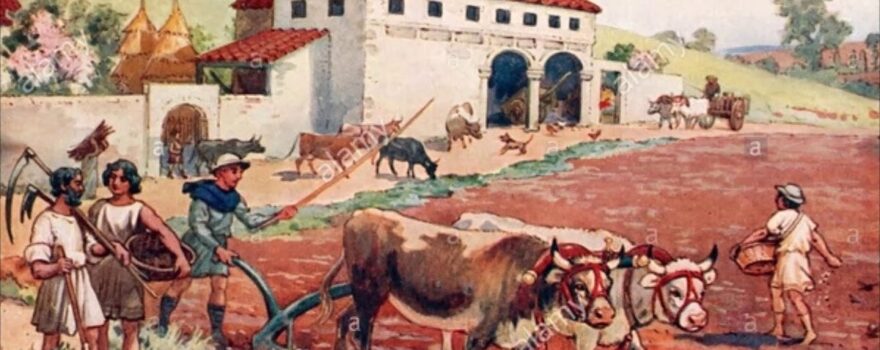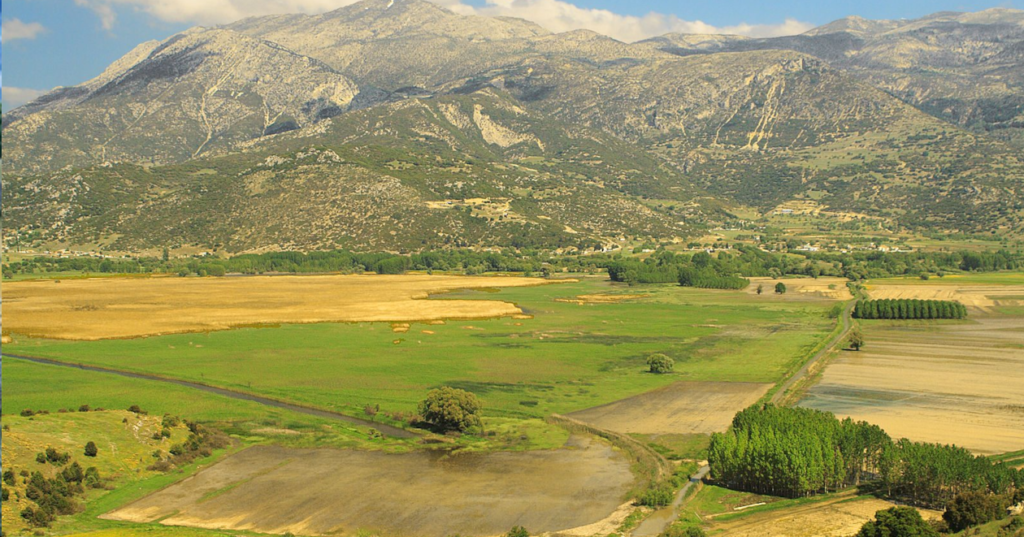
Why was farming difficult in ancient Greece
Climate and Topography
To understand why farming was difficult in Ancient Greece, you need to examine the impact of the region’s climate and topography. In this section, we’ll explore how the mountainous terrain influenced the agricultural practices of Ancient Greeks while also considering the effect of the Mediterranean climate. These sub-sections will offer insight into the unique challenges that Ancient Greek farmers faced.
Influence of Mountainous Terrain
High Altitude Region’s Impact on Climate and Topography
High Altitude Regions have a profound influence on climate and topography. Mountainous terrain affects the local environment through changes in temperature, precipitation, cloudiness, and wind regimes. The impact of such terrain is generally determined by its size and height, with larger mountains having a more pronounced effect than smaller ones.
Mountain ranges act as barriers to airflow, forcing moist air masses to rise and cool rapidly as they pass over the high-elevation landscape. This cooling causes the air to release moisture in precipitation, which can result in significant amounts of rainfall or snowfall. The resulting water runoff from mountainous regions helps shape downstream valleys and basins into distinctive geologic formations.
Along with this, mountainous regions also affect local temperature patterns. Such regions result in variations in temperature conditions at different altitudes due to adiabatic cooling and warming caused by rising and falling air currents along the mountainsides.
Pro Tip: Due to their impact on climate patterns, high altitude regions are critical components of regional weather forecasting models meteorologists worldwide use.
Why visit the Mediterranean when you can experience its climate in your backyard, assuming it is now a desert?
Effect of Mediterranean Climate
Mediterranean Climates and Their Impact on Topography
Mediterranean climates are often characterized by mild, rainy winters and hot, dry summers. These conditions impact topography by contributing to the formation of diverse vegetation, including chaparral, shrublands, and forests such as cork oak and eucalyptus. In addition, the prolonged period of aridity can result in severe soil erosion which leads to landslides and degradation of land quality.
One unique aspect is the presence of Mediterranean climate regions across different continents – all shaped by their specific regional variations. To further emphasise this point more investigation is needed into similarities between California’s Mediterranean climate and that of the east coast of Australia.
To experience landscapes shaped by a Mediterranean climate is an opportunity not to be missed. The natural beauty will inspire mountainside hikes through the vegetation or relaxation while overlooking clear waters off long sandy beaches.
Even the best seeds won’t grow in soil that’s as dry as my sense of humor.
Soil Composition and Fertility
To better understand the challenges that ancient Greek farmers faced due to soil composition and fertility, let’s explore the sub-sections of poor soil quality and limited nutrient content. Discover the solutions to these issues and the impact they had on agricultural practices in Greece.
Poor Soil Quality
A suboptimal nutrient level in the soil can lead to reduced plant growth and yield. This issue can arise from improper soil composition, resulting in poor soil quality. Poor soil quality impacts farmers since it is often related to the depletion of potential nutrients, including nitrogen and phosphorus, which are crucial for plant growth. The lack of adequate air or water spaces within the ground prevents root development, leaving plants vulnerable to diseases and insect pests.
To mitigate these issues, farmers should incorporate organic matter into their land, such as animal manure or green manure crops like clover or alfalfa. By doing so, they can improve their container capacity, drainage, structure, and biological capabilities of the ground. Additionally, testing the soil indicates its nutritional status accurately before planting.
Soil-containing sufficient nutrients boosts crop yield along with improving its nutrient density and taste profile while lowering disease occurrences that affect crops negatively when grown on depleted ground. Farmers must be cognizant of their soil structure and use growing methods that improve its fertility.
Although they had adequate space around them for sustenance purposes at one point in time during human history through farming on fertile lands where farmers optimized crop output by maintaining nutrient-rich soils, this isn’t the case anymore. In today’s world industrialization driven by capitalism’s demand-driven market economy and environmental emissions from factories amongst others have resulted in the depletion of large expanses of land that were once arable but turned infertile over time due largely because wetlands were dried up for farming purposes.
To illustrate one such example where poor nutrition was a concern:
Farmhouse:
Looks like the soil’s nutrient content is on a diet, only providing the bare minimum for plant growth. Someone needs to give it a sandwich.
Limited Nutrient Content
The nutrient content in soil is restricted due to a limited supply of essential elements required for plant growth. This deficiency can result in low crop yield and poor soil health. The unavailability of nutrients in the soil may occur naturally, or it might be exacerbated by human activities such as deforestation and intensive farming practices.
To improve soil fertility, it is necessary to replenish the nutrient supply by using fertilizers or organic matter such as manure and compost. Understanding the composition of the soil is crucial as different plants require different nutrients for optimal growth. Soil testing can help determine the type and quantity of nutrients present or lacking in the soil.
It’s worth noting that excessive fertilizer usage can hurt the environment by causing water pollution and greenhouse gas emissions. It’s advisable to use only the necessary amount of fertilizer for optimal crop yield and soil health.
Pro Tip: Implementing crop rotation techniques is helpful as it allows for pest control, reduces soil erosion, enriches soil diversity, and prevents nutrient depletion.
Remember, all the water in the world won’t help your plants if your soil is crap.
Water Supply
To understand water supply challenges faced by ancient Greek farmers, delve into the sub-sections of Dependence on Rainfall and Lack of Irrigation Technologies. These are imperative for understanding the scarcity of water and how it adversely affected farming practices in Ancient Greece.
Dependence on Rainfall
The reliance on precipitation plays a critical role in the water supply system. Rainfall provides the bulk of freshwater that is vital for human consumption, agriculture, and industry. The amount and frequency of rainfall can significantly affect not only the quantity but also the quality of water available for use. Balanced rainfalls can help maintain sustainable water resources, while deficient rains can cause droughts, leading to water shortages and devastating impacts on ecosystems and livelihoods.
Precipitation patterns vary globally, with some areas experiencing high rainfall rates year-round, while others receive limited rainfall only during specific seasons. This variation may depend on climatic variability, geographic location, vegetation cover, landforms or topography, and human activities such as deforestation or urbanization.
Despite frequent floods or heavy downpours being detrimental and requiring effective management strategies, longer-term drought conditions pose more challenges in ensuring reliable water access.
Inconsistency in rainfall has dramatic consequences for many people who are dependent on it to sustain their daily lives. Small communities in rural areas are often worst affected since they do not have access to modern irrigation technologies like cities do. It’s speculated that climate change could intensify these impacts further through changes in weather patterns.
In 2019, Chennai city in India faced one of its worst water crises in years due to poor monsoon rains. Multiple municipal areas were entirely out of potable water sources underlining how dependent even large urban centers are on precipitation for their initial source of fresh water before treatment processes commence making it clear that there is no alternative to address this issue adequately within heavily affected regions.
Looks like the lack of irrigation technologies is making crops thirsty and farmers frustrated – maybe we should just send them some inspirational posters instead.
Lack of Irrigation Technologies
With the current agricultural practices, scarcity of water is a major concern. The insufficiency of efficient irrigation technologies amplifies the problem as most developing nations rely heavily on agriculture. This leads to low crop yields due to inefficient water distribution.
The lack of innovative irrigation techniques like drip and sprinkler systems impacts crop production and sustainability, particularly in regions that experience minimal rainfall. Traditional methods like surface irrigation are water-intensive and suffer from significant evaporation losses, thereby exacerbating the shortage of water supply.
Inadequate access to advanced irrigation knowledge further worsens the issue. Farmers often do not have enough understanding of effective irrigation management. Proper education on modern technology could significantly improve yield and mitigate the negative circumstances faced by farmers.
Without adequate measures implemented at a global level, low-income nations will continue facing food insecurity due to insufficient food production under inadequate water supply conditions. It is imperative that governments invest in modern agricultural techniques urgently before irreversible harm devastates our ecosystem.
“Why worry about a labor shortage when we can just use all that excess water to grow robot farmhands?”
Labor Shortages
To understand why farming was difficult in ancient Greece, labor shortages played a critical role. Citizen soldier culture and slavery, with its limitations, were the two sub-sections that contributed to this shortage. Let’s examine how these factors impacted the field of agriculture.
Citizen Soldier Culture
The concept of civic-minded citizens stepping up to serve their country has long been a part of American culture, often referred to as the ‘Civic Military Culture’. This passion for serving their community and nation is ingrained in civilians who choose to become citizen soldiers.
These individuals come from diverse backgrounds, yet all possess the drive and willingness to serve. Citizen soldiers are everyday people who take on military duties part-time or full-time, depending on the need. Their dedication ensures our country is protected while still being able to manage other work and family obligations.
Citizen soldier culture emphasizes two things that are integral to a well-functioning democracy: a sense of community service and responsibility, and an active involvement in national security. This combination creates a more connected, compassionate society that values the common good above individual gains.
As labor shortages continue to threaten certain industries, citizen soldiers provide an alternative solution for employers seeking dedicated workers with a strong work ethic and stable career goals. The benefits go beyond this: For citizens who struggle with purposeful meaning or wonder how they can contribute positively toward society; it provides a pathway into giving back.
It is essential now more than ever for us as citizens to embrace our Civic Military Culture and give back through volunteering or joining the military reserves– if not as much for ourselves then most importantly; for each other because America needs you!
Slavery: the original solution to labor shortages, until human rights got in the way.
Slavery and Its Limitations
Slavery, while once a common practice in many societies, has inherent limitations that make it an inadequate solution to labor shortages. Even with the cheap cost of slave labor, slaves require significant resources to maintain and can often rebel or attempt to escape. Furthermore, the use of slavery is increasingly viewed as morally and ethically unacceptable. Instead, modern societies have turned to more sustainable solutions such as immigration and improving working conditions to attract workers.
Research shows that the global slave trade generates illegal profits of around $150 billion per year. (Source: International Labor Organization) Looks like there’s a new Hunger Games in town, and this time the tribute is anyone looking for a place to build a factory.
Competition for Land
To understand the challenges faced by farmers in ancient Greece, the competition for land section with population growth, and economic, and political instability as the solution is crucial. The sub-sections explore the factors that led to the scarcity of arable land and the impact of demographic growth, social upheaval, and political unrest on the availability and distribution of resources.
Population Growth
Human population expansion is a significant catalyst behind the rising demand for land resources. The growth of human populations has resulted in increasing competition, depletion of natural resources, and loss of biodiversity. The sheer magnitude of population growth is troubling, as it not only puts pressure on available land but also creates new urban landscapes at the expense of natural habitats.
The insatiable appetite for land has led to the displacement of indigenous communities and small-scale farmers in many developing countries. This pattern disrupts global food systems and leads to chronic hunger, poverty, social conflicts, and environmental degradation. Furthermore, an increase in population growth results in a higher demand for unsustainable agricultural practices that rely heavily on pesticides and synthetic fertilizers that contribute to pollution.
The convening of international platforms could help address the problem by promoting cooperation among different nations. Efforts should be made towards reducing population growth rates since this would ease some of the demands faced on land use. Another viable option is investment in sustainable agriculture supplemented with appropriate education programs to ensure ecological prosperity. Additionally, utilizing renewable energy sources can provide more sustainable options while reducing reliance on fossil fuels that are detrimental to the environment.
Economic and political instability: the perfect recipe for a land-grabbing free-for-all.
Economic and Political Instability
The volatile economic and political climate can lead to serious consequences in land competition. Instability often breeds uncertainty, which further complicates decision-making processes related to land acquisition and use. This affects both individuals and businesses who are vying for scarce resources in a competitive landscape.
In such situations, individuals may be forced to make risky investments, while businesses may face increased competition from foreign entities. Additionally, regulations and laws related to land use may fluctuate as government policies change rapidly. This creates a lack of clarity and increases the risk of legal action against parties who inadvertently operate outside of rules they didn’t know existed.
The threat of heightened instability constantly looms over this already cutthroat environment, leading to increased anxiety for those trying to succeed in the competition for land. As new players enter into the fray with their own strategies, funding and resources become even scarcer commodities. Businesses must work hard to innovate or face being left behind in the race for growth.
The reality is stark: any misstep in acquiring or utilizing land could mean falling behind competitors, creating a sense of urgency that is difficult to ignore. Those who fail to adapt will inevitably find themselves sidelined by their more agile counterparts who navigate complex regulations with ease while still managing risks effectively. The economic security of entire regions rests on effective management of a limited resource like land- reminding us all that carefulness pays dividends.
Looks like the competition for land has officially turned into a Hunger Games-style battle for survival.
Farming in ancient Greece posed many challenges due to its geographical location and climate of the region. The rugged terrain with rocky soil and poor water supply was inadequate for agriculture, making it challenging to grow crops. In addition, the hot and dry summers coupled with unpredictable rainfall made it difficult for farmers to cultivate their land efficiently.
Moreover, the lack of the latest tools and technology further hindered productivity in farming, putting a strain on resources. The small farms with few workers have troubling consequences on food security, which affected both urban as well as rural populations. These factors led to a reliance on imports of goods from surrounding areas such as Asia Minor, Egypt and Sicily.
Pro Tip: It is important to understand local climatic conditions when planning for agriculture; farmers should aim at implementing modern techniques while preserving traditional methods.
Frequently Asked Questions
Q: Why was farming difficult in ancient Greece?
A: Farming in ancient Greece was difficult because the soil was generally poor and rocky, making it difficult to grow crops.
Q: Did ancient Greeks have tools for farming?
A: Yes, ancient Greeks had a variety of farming tools, some of which were quite advanced, such as plows and sickles.
Q: Was weather a factor in ancient Greek farming?
A: Yes, weather conditions played a significant role in ancient Greek farming. Droughts, frost, and infrequent rainfall made it challenging to cultivate crops.
Q: How did ancient Greeks deal with farming challenges?
A: To cope with the challenges of farming in ancient Greece, farmers used irrigation systems and terracing techniques. They also rotated crops and used manure as fertilizers.
Q: What crops did ancient Greeks grow?
A: Ancient Greeks mainly grew wheat, barley, and olives, which were their most important crops. They also grew grapes, figs, and other fruits and vegetables.
Q: Did ancient Greeks engage in animal husbandry?
A: Yes, ancient Greeks did engage in animal husbandry. They raised goats, sheep, cows, and pigs for meat, dairy products, and wool.

